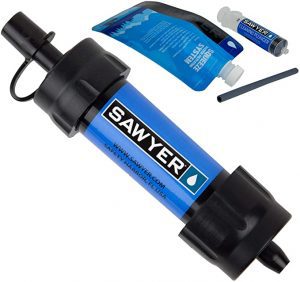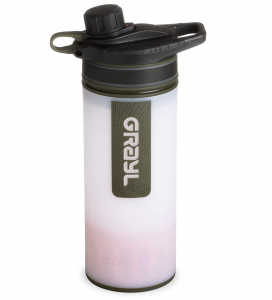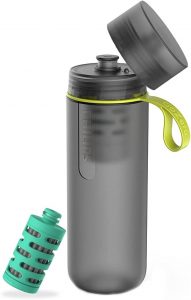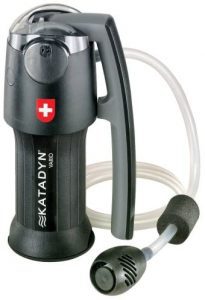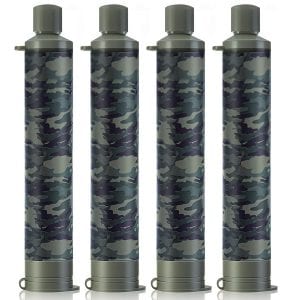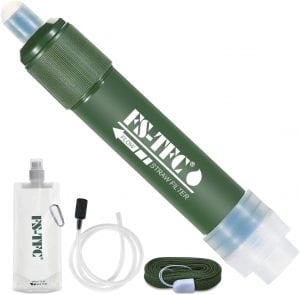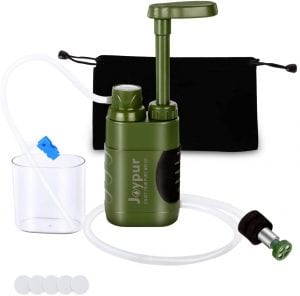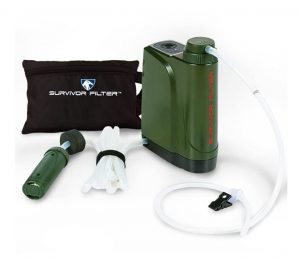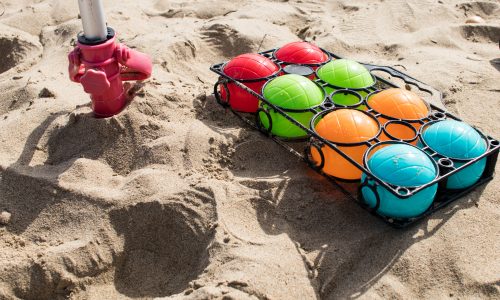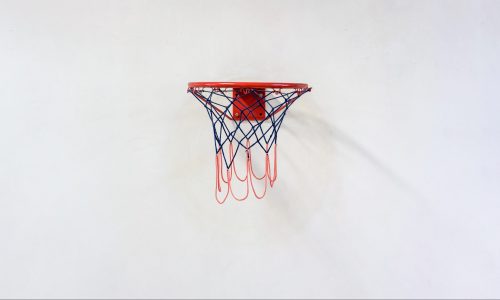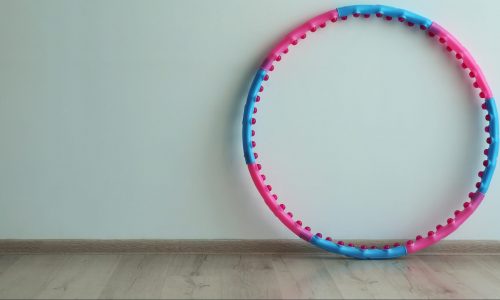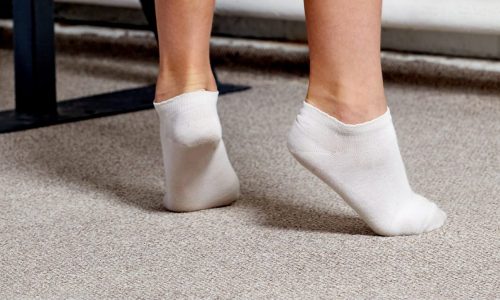The Best Water Filter For Outdoors
We looked at the top 9 Water Filters For Outdoors and dug through the reviews from 11 of the most popular review sites including and more. The result is a ranking of the best Water Filters For Outdoors.
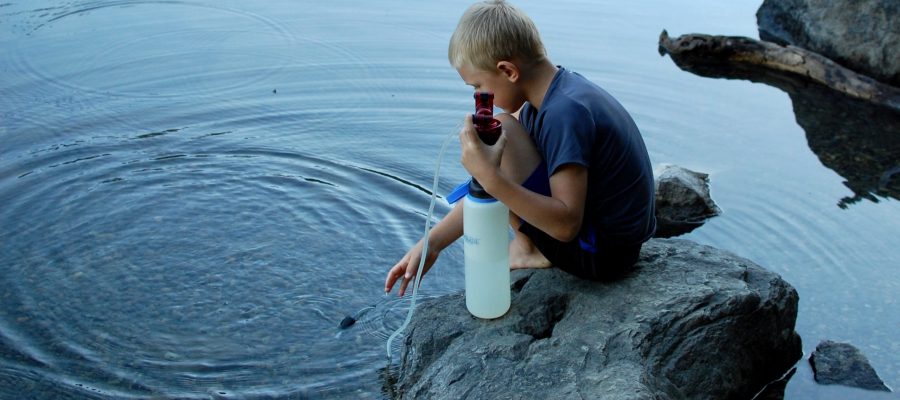
Our Review Process
Don't Waste Your Money is focused on helping you make the best purchasing decision. Our team of experts spends hundreds of hours analyzing, testing, and researching products so you don't have to. Learn more.
Our Picks For The Top Water Filters For Outdoors
- 1. LifeStraw Microplastic Removing Water Filter For Outdoors
- 2. Sawyer Products Emergency Preparedness Water Filter For Outdoors
- 3. GRAYL Anti-Virus Emergency Water Filter Bottle For Outdoors
- 4. Philips Water To-Go Eco-Friendly Filtering Bottle For Outdoors
- 5. Katadyn Easy-Clean Ceramic Water Filter For Outdoors
- 6. Membrane Solutions Long Lasting Water Filter Straw For Outdoors
- 7. FS-TFC Activated Carbon Fiber Water Filter For Outdoors
- 8. joypur Odor Removing Water Purifier Filter For Outdoors
- 9. Survivor Filter PRO X BPA-Free Water Filter For Outdoors
Whether you're camping, hiking or walking the trails at your local nature preserve, you'll want to have this water filter for outdoors on hand. It successfully removes 99.99% of bacteria and parasites from water, making the water safe for human consumption. Using the device is a breeze. All you need to do is stick the bottom half in a body of water...
Handy and EffectiveThe microbiological filter on this unit is able to clean up to 1,000 gallons of water.
Whether you're planning a hiking trip or packing an emergency preparedness kit, this water filter for outdoors is a must-have tool. It's small and lightweight, making it easy to fit in any backpack or suitcase. It's designed to filter 99% of bacteria, protozoa and microplastics in as many as 100,000 gallons of water.
Multiple Color OptionsYou'll find this water filter for outdoors comes in a choice of colors, including blue, black, orange and green.
Fill this water filter for outdoors with freshwater and it will begin removing everything from bacteria to chemicals and heavy metals. It's perfect for camping trips, as well as emergency preparedness kits. You can even get the filter in oasis green, Bali blue or coyote amber.
Large CapacityThis water filter for outdoors has a large 24-ounce capacity.
Available in five fun colors, this water filter for outdoors is a must for hikers and campers. It's nice and lightweight and features a strap for carrying or attaching to a backpack. The bottle's filter is able to successfully eliminate up to 99.99% of bacteria, viruses and chlorine from freshwater sources.
Economical PickThe budget-friendly price tag on this water filter for outdoors means you'll be able to afford more than one.
Buying Guide
Whether you are hiking in the remote backcountry or traveling abroad, having access to clean drinking water is essential. Packing a portable water filtration system is one of the best ways to protect yourself from contaminants like bacteria, viruses and heavy metals to ensure you always have refreshing, safe water on hand.
There are many different types of filtration systems, from electric, pump and gravity-powered varieties, to straw-style and bottle filters. No matter which one you choose, every device should have an internal component, like a cartridge, that strains out debris, protozoa and bacteria using microscopic pores. Over time and after a certain number of uses, the component must be cleaned or replaced to keep working as intended.
Many systems also include activated carbon and pre-filter elements. The carbon removes colors, odors and nasty flavors like chlorine, and reduces contaminants like pesticides and man-made chemicals. Meanwhile, the pre-filter removes large particles — think: silt, leaf debris and sediment — before the water reaches the second component, which strains out the microscopic contaminates. A pre-filter can help improve the device’s water flow rate and extend the life of all of its elements.
Some of the most common portable water filtration systems include the pump, which draws water via an intake hose from a stream, pond or other source into a bottle or bag; the squeeze bag or bottle, a reservoir that you squeeze to send the water through a filtration element; and the straw, a literal straw with a built-in element that allows you to safely slurp water directly from the source.
Electric-powered models are the most advanced and can filter over 15 ounces of water per minute. They draw water from sources using a hole, but no manual pumping is required. While this option is also the priciest, it is a great investment for those who have access to a power source, batteries or a mobile charger.
Why we recommend these water filters for outdoors?
Products Considered
Products Analyzed
Expert Reviews Included
User Opinions Analyzed
Our experts reviewed the top 9 Water Filters For Outdoors and also dug through the reviews from 11 of the most popular review sites including and more. The result is a ranking of the best of the best Water Filters For Outdoors.
DWYM is your trusted roduct review source. Our team reviews thousands of product reviews from the trusted top experts and combines them into one easy-to-understand score. Learn more.
What to Look For
- There is a difference between a water filter and purifier; the former removes physical sediment, bacteria, protozoa and cysts but may not remove smaller viruses, like norovirus and hepatitis A. However, while a purifier may remove all types of contaminants, it doesn’t remove sentiment.
- Outdoor water filtration systems vary greatly in price.
- Carefully read the directions that come with your water filtration system; every product works differently and there are precise steps to avoid cross-contamination (mixing untreated water with clean water).
- For the best results, find water that is as clear as possible before filtering. Even if your device has a pre-filter, sentiment in murky water can slow down the filtration process or make it less effective.
More to Explore
We can thank French scientist and soldier Joseph Amy for securing the first patent for a water filter design in 1746. His invention used wool, sponge and charcoal layers to purify drinking water. Before then, the most commonly used method was boiling and sifting water with a cloth, a technique introduced by the pioneering Greek physician, Hippocrates, in the 5th century B.C.



